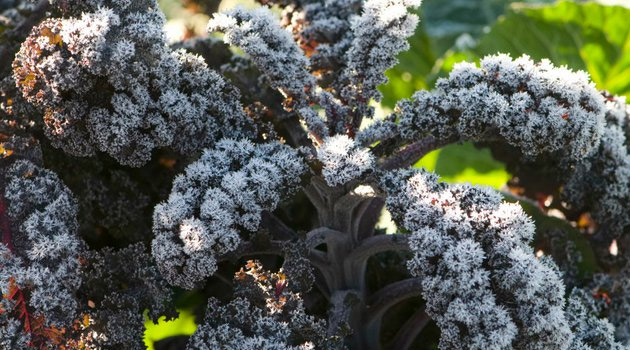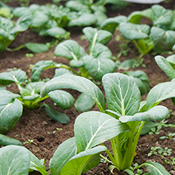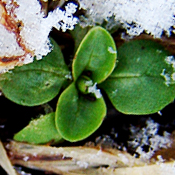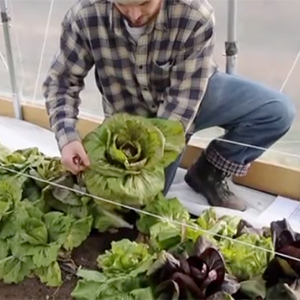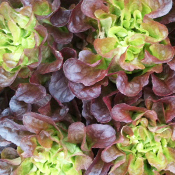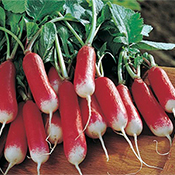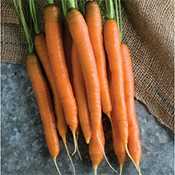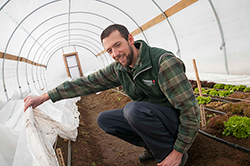- 10 Ways to Extend Your Season with Protected Cultivation
- QuickHoops Gothic High Tunnel Bender | Construction Manual for Modular Moveable Gothic High Tunnel (PDF)
- QuickHoops Gothic High Tunnel Bender | Construction Manual for Stationary Gothic High Tunnel (PDF)
- QuickHoops High Tunnel Bender | Construction Manual for Building a Stationary High Tunnel (PDF)
- QuickHoops Low Tunnel Benders | Instruction Manual (#9377 & #9520) | (PDF)
- Agribon+ AG-19, 30, 50 & 70 Row Cover | Insert (PDF)
- Hitch Mount for QuickHoops Low Tunnel Benders | Instruction Manual (PDF)
- Bobcat Automatic Ventilation Kit Manual (#6791) | Tech Sheet (PDF)
- Bobcat Pro High Tunnel Kit Manual (#6794) | Tech Sheet (PDF)
- Bobcat Pro High Tunnel Kit (#6794) | Parts List (PDF)
- Bobcat Sliding Door Kit Manual (#6792) | Tech Sheet (PDF)
- Bobcat Standard High Tunnel Kit Manual (#6795) | Tech Sheet (PDF)
- Bobcat Standard High Tunnel Kit (#6795) | Parts List (PDF)
- Bobcat Steel End Wall Kit Manual (#6793) | Tech Sheet (PDF)
- Truss Support Kit Manual (#6790) | Tech Sheet (PDF)
- Bobcat Tunnel Kits | Comparison Chart
- Beginning & Intermediate Controlled Environment Agriculture (CEA) | Advances in Greenhouse Crop Production
- 5 Cool Flowers to Plant Now | Lisa Mason Ziegler's Secrets for Growing Hardy, Cool-Season Annuals
- Hoop Loops | Installation Instructions | Tech Sheet (PDF)
- Introduction to Overwintering Flowers | Guide to Overwintering Flowers
- Overwintering Perennial Herbs
- Protect Your Crops | High & Low Tunnel Basics
- The Effect of Shorter Daylength on Winter Production
- Be First & Last to Market by Extending Your Growing Season
- Quick Hoops Low Tunnels | Set-up & Management with Eliot Coleman
- Constructing the Modular Moveable Gothic Tunnel – Animated Schematic
- Moving the Modular Moveable Gothic Tunnel – Slideshow
- Skinning the Modular Moveable Gothic High Tunnel – Slideshow
- Overwinter Flower Trials | Multiyear Results for 30+ Crops | Johnny's Selected Seeds | XLSX
- Seeding Date Calculator | Johnny's Recommended Flowers for Overwintering | XLSX
- Overwintering Onions from Seed | Johnny's Selected Seeds
- Overwintering Crops | Planting Chart for Earliest Spring Vegetable Harvest
- Pest & Disease Control Basics in Greenhouse, Hydroponic & Other Protected-Culture Systems
- Pests & Diseases of Greenhouses & Hydroponic Systems | Tech Sheet (PDF)
- Why & What to Grow in a Greenhouse? Basics of Protected Culture
- Recommended Varieties from Our Greenhouse Trials | What We Look for in Greenhouse Crops
- QuickHoops 3'W x 4.5'H Low Tunnel Bender (#7616) | Instruction Manual (PDF)
- Cable Purlin Trellis for QuickHoops High Tunnels | Installation Manual (PDF)
- QuickHoops Moveable High Tunnel Bender | Instruction Manual (PDF)
- QuickHoops Seedling & Microgreens Bench | Construction Guide (PDF)
- Row Cover & Insect Netting Options & Uses | Comparison Chart (PDF)
- Tufflite IV Greenhouse Film | Comparison Chart (PDF)
- Univent Automatic Opener for BiFold Doors | Instruction Manual (PDF)
- Video: Johnny's Season Extension & Overwintering Trials
- Video: Planning & Planting the Autumn Vegetable Garden | Tips & Recommendations with Niki Jabbour
- Video: Growing Under Cover with Niki Jabbour | Johnny's Webinar Series
- Video: Veggie Remix: Bring New Flavors & Colors Into Your Garden | Johnny's Webinar Series
- Video: Cover Cropping for Field & Garden with Collin Thompson | Johnny's Webinar Series
- Video: Tips & Crop Recommendations for the Autumn and Winter Cold Frame • Tutorial with Niki Jabbour
- Video: DIY Cold Frame • Easy How-to Tutorial with Niki Jabbour
- Video: How to Use Quick Hoops™ Benders to Create High & Low Tunnels
- Video: The Benefits of Row Covers | Recommendations & Tips
- Video: Hoop Houses & Other Ways to Extend Your Growing Season
- Video: Take a Tour with Us of Johnny's Greenhouses!
- Growing Under Cover with Niki Jabbour & Johnny's | Johnny's Educational Webinar Resources
- Johnny's Winter Growing Guide | Printable Brochure (PDF)
- Winter Production in the High Tunnel | Johnny's Winter Growing Guide
- Winter Growing Guide | Introduction & Part 1: Scheduling Your Winter-Harvest High Tunnel
- Winter Growing Guide | Protection Methods for Overwintering in Low Tunnels
- Winter Growing Guide | Scheduling Guidelines for Overwintered Crops
- Winter Growing | Recommended Crops & Varieties
- Planting Dates for a Winter Harvest | Johnny's Winter Growing Guide
- Webinar Slide Deck | Overwintering Flowers | 41-pp PDF
- Gardening in a Cold Frame With Niki Jabbour
- Video: Irrigation Considerations for the Overwinter Flowers Tunnel | Johnny's Selected Seeds
- Choosing Flower Crops to Overwinter | Guide to Overwintering Flowers
- When to Start Seeds for Overwintered Flowers | Guide to Overwintering Flowers
- Video: Winter Sowing & Milk-Jug Greenhouses | With Niki Jabbour & Johnny's
Focus on CROPS for WINTER GROWING
Johnny's Winter Growing Guide
Ranked by Reliability for Winter Growing Success
Feedback received from northern growers has provided a ranking of crops proven successful for winter growing regionally. In order of popularity and degree of reliability, these crops fall into 3 tiers. Hardiness, adaptability to winter growing, and quality and quantity at harvest time also factor into the ranking.
- SPINACH
- KALE
- BABY LEAF BRASSICA GREENS
- ARUGULA
- PAC CHOI/BOK CHOY
- CHOI SUM
- MIZUNA
- CHICORY
- CILANTRO
- BROCCOLI RAAB
- LETTUCE
- CARROTS
- RADISHES
- SCALLIONS
- BUNCHING ONIONS
- LEEKS
- TURNIPS
Branch Out or Specialize In
These are the predominant crops suited to winter production at the more northerly (or higher-latitude) tiers. Depending upon your climate, risk tolerance, and market demand, you may be able to fit a number of other crops into your winter production plan. A few others you might want to try include claytonia, mâche, minutina, late-sprouting broccoli, parsley, or other roots, flowers, and herbs.
Crop by crop, here are some of our top performers in the winter harvest and overwintering slots…
Winter Growing, Crop by Crop
TIER 1 • Most Reliably Successful
Spinach
Winter spinach is exceptionally sweet and flavorful. The plant builds up sugars in response to cold, which protect its cells from bursting in freezing conditions. Spinach is also easy to grow, making it a good first choice if you are new to winter growing.
Sow your winter-harvest spinach 35–50 days before the start of the Persephone period. Spinach does not germinate well under the warm conditions that often prevail at this time. To optimize germination rates when it's warm at seeding time, irrigate before planting, to cool the soil. To ensure your desired plant density, you can alternatively start spinach in plugs or paperpot trays and grow to transplant size (two true leaves). Some growers configure LED-lit racks or shelving units in their basements to provide a conveniently cooler, indoor seed-starting environment at this time of year.
Reliable choices for winter-harvest spinach include 'Auroch', 'Sunangel', 'Hammerhead', 'Kolibri', and 'Space', which can be seeded in late summer through late fall for winter harvest.
Seeding earlier will produce earlier harvests that will continue to grow and remain harvestable over the course of the winter. Planting in late fall, with the plants reaching approximately an inch in height by the solstice, is likely to produce harvestable spinach by February.
These spinach varieties can also be resown in winter for baby leaf production in early spring. They will grow quickly in spring and will be harvestable multiple times before bolting.
In some regions, overwintered spinach is prone to downy mildew infection. Make sure you select varieties that are resistant to the races of downy mildew, if any, that are prevalent in your area. (Check with your Cooperative Extension Service.)
Kale
Like spinach, kale is much sweeter in the coolest months of the year.
All varieties of kale can be grown in the winter, but curled-leaf varieties are a bit hardier, and make for bigger bunches more quickly — you will spend less time harvesting the kale and your bunches will look fuller. Green curlies and Russian types grow the fastest and are the most winter hardy, red curlies grow a little more slowly, and lacinato types grow very slowly in the winter and are the most sensitive to tipburn from the cold.
Seed kale in late July or early August for transplanting in September. Cover with lightweight row cover to exclude a variety of insect pests. Harvest from late October through March by clipping the leaves from the bottom up. It may not be necessary to protect kale if the plants are fully harvested by the time the coldest winter temperatures hit.
Kale plants of varying size can be kept overwinter in low tunnels, for harvest in early spring. The quality of the large leaves remaining in spring will depend on the severity of the preceding weather. Surviving small plants will quickly begin producing new growth.
For overwintered production of baby leaf kale, choose 'Red Russian' or 'White Russian' for faster regrowth and exceptional cold hardiness.
TIER 1–2
Brassica Greens
Numerous brassicas make good winter production candidates. Pac choi is one which due to the thickness of its stems can endure a measure of freeze damage. Pac choi petioles are more likely to become pithy and stringy after being exposed to very low temperatures, if the plants have been held for a long time at a harvestable stage. Try multiple planting dates and harvest when ready, to ensure they are not over-mature at your desired harvest dates.
Asian leafy greens such as komatsuna, mizuna, and tatsoi, as well as other brassica greens such as arugula and mustards, will regrow and can be cut multiple times throughout the Persephone period. Plants are less likely to incur cold damage when repeatedly harvested at the baby leaf stage rather than grown to full size, but may experience winter kill if planted too densely.
Choi sum ('Hon Tsai Tai' and 'Green 70D Improved') and broccoli raab ('Spring Raab'), too, are suited to winter production, most reliably in milder regions, as their stems and buds can be freeze-sensitive.
Other Greens
Because they are all very cold-hardy, claytonia and mâche can often be grown in an unheated hoophouse without a second layer of row cover. While they may not grow significantly during the Persephone period, they can be harvested during those darkest weeks.
Greens for winter harvest should be planted from August through October for harvest from September through March. Soil temperature when seeding should be 70°F (21.2°C) or lower, to optimize germination rates.
All of these greens will grow slowly through the winter for intermittent harvests during the coldest and darkest weeks, then more uniformly into the spring for more regular harvests. For example, mâche planted in late September in the tunnel here in Maine is typically ready to be harvested in January and does not bolt until early March, while claytonia becomes full and beautiful as it emerges from the Persephone period, with lovely little flowers.
TIER 2 • Second Most Dependable
Chicory
Chicory adds intriguing diversity to a winter greens collection.
Endive and escarole types (Cichorium endivia) are not quite as cold-tolerant as other types and can be expected to behave similarly to lettuce.
Radicchio (Cichorium intybus), however, shines in the winter tunnel, with superior cold-tolerance, eye-catching colorations, patterns, and shapes, and sweeter flavors that are not always as achievable at other times of the year.
It can be difficult to dial in the ideal planting date for consistent radicchio heading. We recommend sowing a few successions to help increase your chance of success if heading types are your target.
The more open-heading and faster-growing varieties, such as 'Bel Fiore' and 'Fiero', can perform particularly well in winter.
Younger radicchio plants are even more cold-tolerant than mature heads, and can likely overwinter with just a single layer of row cover. By late February they will start rapid regrowth, offering an extra-early harvest of unique, tasty greens to add to the mix.
Although hardy and reliable, chicory does take longer to mature than other winter greens. It is less well-recognized by some customer segments than others, so some customer education may be helpful to ensure its ROI potential.
Cilantro
Cilantro should be sown mid September to early October in a protected structure such as a high tunnel. With mild flavor and tender leaves, overwintered cilantro lends itself well to harvesting at baby leaf maturity.
Cover plants with heavy-weight row cover when temperatures dip below freezing in the structure, but try to uncover them when temperatures warm back up, to better expose the plants to sunlight and allow for air flow.
Cilantro plants will grow very slowly through the depths of winter, but take off in late winter to early spring, with harvests possible from March through May.
TIER 3 • More Challenging
Lettuce
“ They were amazingly hardy and had little cold damage. We used 1–3 layers of row cover, but have a temperature monitor under the rowcovers, and it got down to the high teens on several nights. The only one we see with some damage is Green Incised Leaf, but it is minor…
“ All in all, love it! ”
— Sandy Arnold, Pleasant Valley Farm, New York
Lettuce is less cold-hardy than many greens, and fares best in a partially heated greenhouse or under a low tunnel within an unheated hoophouse. We suggest harvesting the lettuces before they're required to endure the coldest temperatures post mid winter.
We also note the young leaves of salad mix (baby leaf) tend to be less susceptible to freeze damage than mature lettuce heads, and similarly, that open heads are less susceptible than closed-formed heads. Crunchy, juicy varieties are more susceptible to cold damage and a decline in quality after multiple freezes.
Salanova and one-cut lettuces grown for mini heads and multicut salad mix (cut-and-come-again, or CCA) can be very successful in heated and unheated systems. These lettuces have excelled in our winter trials in Albion, Maine when set out as transplants in late September and covered with two layers of supported row cover, inside the tunnel.
One limiting factor in high tunnels is the filtering of sunlight that decreases the vivid red color of some lettuce varieties. For winter growing, we recommend 'Five Star Greenhouse Lettuce Mix', 'Salanova Red Butter', and 'Salanova Red Oakleaf' for their downy mildew resistance as well as their ability to retain dark red colors.
During winter months, varieties in some mixes may have varying growth rates. Some growers prefer to plant each variety individually and mix them after harvesting.
Radishes
Radishes grow speedily and, like fresh carrots, their high-contrast colors brighten up the winter vegetable palette — features that help justify their production in the high-value space of the winter tunnel.
Although they are generally quite cold-tolerant, radishes will become spongy if frozen hard repeatedly.
Consider varieties with quicker maturities and shorter, bunchable tops for demonstrable freshness at market. Most small, round varieties are good for winter growing, as are the French breakfast types, including 'Nelson'. Late-maturing or daikon types are better for winter sales out of storage, as they take more time and space per plant to grow, offering a much lower ROI — plus, they store very well.
Turnips
You can direct seed turnips in the fall. Plant enough seed to provide for a long winter-harvest period, and lay row cover over the crop if flea beetles are a problem.
Be advised that turnips will not hold into the spring, however, and will bolt by March in the tunnel.
The best winter turnip is the white variety 'Hakurei'. 'Scarlet Queen Red Stems' and the more traditional, heirloom variety 'Purple Top White Globe', can also work well.
Carrots
Winter-harvest carrots are super sweet. In addition, they are orange — unlike most fresh winter-harvest crops — adding a welcome touch of color to the produce you offer for sale.
Carrots should be direct-seeded in early August for harvest from Thanksgiving through Christmas. If grown under row cover, their tops will be protected. A display of bunched carrots clean, attractive tops signals freshness to prospective customers.
Carrots can also be successfully overwintered as young plants, to grow and reach harvest size in early spring.
'Napoli', 'Yaya', 'Aranka', and 'Mokum' are among the best varieties to plant in fall for winter harvest. Consider tighter spacings with these varieties, to maintain slender snacking carrots and higher potential yields per area.
Scallions, Bunching Onions & Leeks
Bunching onions, also known as scallions, can be grown either for winter harvest or overwintered for spring harvest, but require ample lead time. They can be planted in either low or high tunnels, but we suggest low tunnels so they do not tie up the more valuable space within a high tunnel all winter.
Direct-seed scallions in August, and begin harvesting when they reach the desired size.
For spring harvest, we start ours in the third week of August. Use our planting chart to determine the best date to start yours. (To harvest them in the winter, they would need to be started in early August or even earlier.)
Different varieties are preferred for winter-harvested scallions than for overwintered scallions.
- For late-winter harvest, 'Evergreen Hardy White' is good and cold-hardy, but it will bolt in the spring if overwintered.
- For overwintering, we suggest 'Deep Purple' and, for a more traditional white scallion, 'Guardsman'.
Some varieties of fast-growing onions can be overwintered in low tunnels. Onions for overwintering should be sown in late August to early September, then transplanted out in late September to early October, with the goal of their having 4–5 leaves before the hard freeze in November. If they make it through the winter, you will have "bunchable" spring onions by late May to early June.
In Quick Hoops trials at our research farm in Albion, we have found that 'T-448' and 'Red Spring' are great for this application. 'Bridger' also works well and is about a week later than 'T-448', for growers who want to achieve a successive harvest.
Many varieties of leeks are winter-hardy to varying degrees. Protection in tunnels or by row covers will further enhance their survival. 'Oslo' is a particularly winter-hardy leek variety.
The Bottom Line
Winter growing is not a straightforward process, nor one with a guaranteed return, but if you have an interest and the required resources, it can be rewarding in many ways. Chief among these:
- Your winter harvests can help you build a year-round customer base as well as retain valuable employees, support your local economy, and nourish your local community.
- Many growers find that fresh greens nicely augment a selection of winter storage crops at winter farmers markets and in CSA distributions, where there is increasing expectation for diverse offerings.
- Fresh, locally grown crops command a premium throughout winter and the shoulder seasons, being generally unavailable in the supermarkets and in higher demand than the same crops in summer.
- Winter-grown spinach and other greens are different from, and frequently superior to those grown outdoors during the main season or trucked in from elsewhere.
If you complete construction of your first new high tunnel in late summer, you will likely want to plant something right away. That first winter harvest can be very inspiring.
For those with just one tunnel, the prospect in late summer of ripping out high-return crops like tomatoes, cucumbers, and peppers may seem misguided at first. But as winter draws closer, the quality and quantity of those crops will decrease. Your best decision may be to replace heat-loving summer crops with those that perform well during the darker days of the year. By combining succession strategy with construction of additional tunnels, you can reap the many benefits of winter growing.
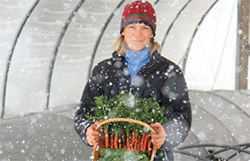
- Intro to Winter Growing
- Scheduling Guidelines for the Winter-Harvest High Tunnel
- Winter-Harvest Crops • Planting Chart
- Winter Production in the High Tunnel
- Overwintering Scheduling Guidelines
- Overwintering Crops • Planting Chart
- Protection Methods for Overwintering in Low Tunnels
- Focus on Crops & Varieties for Winter Growing
- Overwintering Onions from Seed
- Intro to Overwintering Flowers • Methods & Recommendations from Johnny's Overwinter Flower Trials


